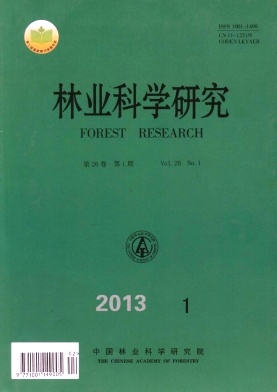Controlled Breeding Techniques to Accelerate Rooting of Poplar Floral Cuttings by Warming the Flowerpots
-
1.
College of Forestry, Northeast Forestry University, Harbin 150040, Heilongjiang, China
-
2.
Poplar Research Institute of Liaoning Province, Gaizhou 115200, Liaoning, China
-
3.
Research Institute of Forestry, Chinese Academy of Forestry, Beijing 100091, China
-
Received Date:
2011-03-07
-
Abstract
Species such as Populus deltoides Bartr. which are difficult to root and have a long period of seed maturation are not amenable to controlled crossing using floral cuttings in water culture. A controlled breeding technique were studies involving accelerating rooting of floral cuttings by warming the flowerpot using a constant water temperature and at the same time keeping flower buds in dormancy by low temperature environment. The floral cuttings were planted in flowerpots with soil and grown in a cool (3℃) room, the pots being soaked in water at 3 different temperatures. After 25 days, the pots with the floral cuttings were moved to the greenhouse for controlled crossing. The floral cuttings of P. deltoides with internal soil temperature of 22℃ were much superior to the others. Not only did it ease maintaining the vigor of floral cuttings, but also result in more and better seeds, which had 25.5 root hairs, root length of 31.8 cm and root weight of 16.9 g on average. The ones with 18℃ treatment had 12 root hairs, 10.4 cm root length and 2.7 g root weight on average, and the ones with 14℃ treatment had 2.2 root hairs, 4.2 cm root length and 0.4 g root weight on average. Efforts to improve rooting of P. deltoids by warming the flowerpot proved to be successful in controlled crossing with species of sections Aigeiros and Tacamahaca. All the floral cuttings in soils at 22℃ produced seeds (100%), with an average of 1 800 seeds per floral cutting. 60% floral cuttings at 18℃ treatment survived, but the flowers fell because the cuttings had so weak root hairs that they were not enough to support blooming, with an average of 1 000 seeds per fruited cutting. Of those at 14℃ treatment, 20% of cuttings produced seeds, with an average of 500 seeds per fruited cutting, and 80% of the floral cuttings were infected by canker. Other female parents such as P.×canadensis showed similar results to P. deltoides, but floral cuttings of section Tacamahaca have good rooting in water culture, and showed similar results to the rooting treatment of floral cuttings in controlled crossing. Thin floral cuttings are easy to root and can maintain more catkins than floral cuttings in water culture. This is also helpful for female trees.
-

-
References
|
[1]
|
Schweitzer J A, Martinsen G D, Whitman T G. Cottonwood hybrids gain fitness traits of both parents:a mechanism for their long-term persistence? [J]. American Journal of Botany, 2002, 89(6):981-990 |
|
[2]
|
苏晓华,张绮纹.世界杨树杂交育种亲本利用的进展及对策[J].世界林业研究,1992,5(2):29-35
|
|
[3]
|
王世绩. 杨树研究进展[M]. 北京:中国林业出版社, 1995
|
|
[4]
|
李善文,张志毅,何承忠,等.中国杨树杂交育种研究进展[J].世界林业研究,2004,17(2):37-41
|
|
[5]
|
李新国.土培法杨树室内杂交中切枝离体培养的新方法[J].湖北民族学院学报:自然科学版,1989,9(2):78-80
|
|
[6]
|
赵志成,苏雪辉,魏万生.杨树花枝嫁接杂交技术初报[J].河南林业科技,2003,23(4):4-11
|
|
[7]
|
Zalesny R S, Riemenschneider D E, Hall R B. Early rooting of dormancy hardwood cuttings of Populus:analysis of quantitative genetics and genotype ×environment interactions[J]. Can J For Res, 2005, 35:918-929 |
|
[8]
|
Arora R, Rowland L J, Tanino K. Induction and release of bud dormancy in wood perennials:a science comes of age[J]. HortScience, 2003, 38(5):911-921 |
|
[9]
|
Kalcsits L, Kendall E, Silim S,et al. Magnetic resonance microimaging indicates water diffusion correlates with dormancy induction in cultured hybrid poplar (Populus spp.) buds[J]. Tree Physiology, 2009, 29:1269-1277 |
|
[10]
|
Ibáñez C, Kozarewa I, Johansson M,et al. Circadian clock components regulate entry and affect exit of seasonal dormancy as well as winter hardiness in Populus trees[J].Plant Physiology August,2010, 153:1823-1833 |
|
[11]
|
Luo M, Dennis E S, Berger F, et al. Miniseed3(mini3),a WRKY family gene, and HAIKU2 (IKU2), a leucine-rich repeat(LRR) kinase gene, are regulators of seed size in Arabidopsis[J]. PNAS, 2005, 102(48):17531-17536 |
-
-
Proportional views

-





 DownLoad:
DownLoad: